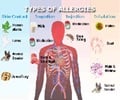- Spring Allergies - (https://www.aaaai.org/aaaai/media/medialibrary/pdf%20documents/libraries/el-spring-allergies-patient.pdf)
- About Seasonal Allergies - (http://acaai.org/allergies/types/seasonal)
- Allergic rhinitis - (https://www.nlm.nih.gov/medlineplus/ency/article/000813.htm)
- RHINITIS (HAY FEVER) - (https://www.aaaai.org/conditions-and-treatments/allergies/rhinitis.aspx)
- Sublingual immunotherapy for allergic rhinitis (including hay fever) - (http://www.cochrane.org/cd002893/ent_sublingual-immunotherapy-for-allergic-rhinitis-including-hay-fever)
What is Spring Allergy?
Do you sneeze, cough and have itchy or watery eyes/nose during a particular time of the year? You might be suffering from seasonal allergy that is caused by some of the most common triggers of allergy such as the pollen, grass and mold. Spring allergy is a seasonal allergy occurring during the spring season.
After the onset of spring season when flowering plants begin to bloom, billions of tiny pollen grains are found in the air, which could trigger allergy symptoms in millions of people. The condition is called seasonal allergic rhinitis or commonly known as hay fever. It has been a global health problem with its prevalence been on the increase for the past twenty years. It can tremendously affect the quality of life as it can cause sinus infections, interrupt sleep and affect productivity in general.
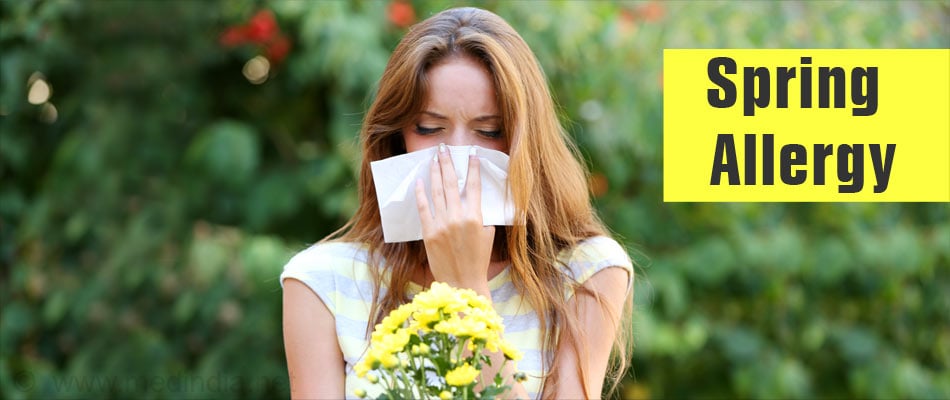
What are the Causes of Spring Allergy?
The most common trigger of spring allergy is different kinds of plant pollens from grass/trees, mould, animal dander and house dust mites. These common triggers of allergy are called allergens and when a person who has the allergy happens to breathe in an allergen, the body releases histamines and chemical mediators that cause allergy symptoms.
The pollen from grasses, trees or weeds is carried by the wind and the kinds of plants that cause the allergy might vary in different areas. The amount of pollen in the air that a person breathes in might affect the development of hay fever symptoms. For example, hot, windy and dry days are more likely to have a large amount of pollen in the air and during cool, rainy and damp days most of the pollen are washed to the ground. The pollen count measures the amount of allergens in the air in grains per cubic metre.
It can sometimes be triggered by common indoor allergens like dried skin flakes, saliva and urine found on animal dander, dust mites and cockroach particles too. Other irritants could be smoke, strong odors, humidity of the air or changes in temperature.
The allergy could be hereditary too. If both of your parents have hay fever or other allergies, you are likely to acquire it too. And if in particular, your mother is allergic, your chances of acquiring it are higher.
What are the Symptoms of Spring Allergy?
- Itching in the nose, eyes, throat, roof of the mouth, skin or any other area
- Sneezing
- Coughing
- Sore throat
- Watery eyes/nose
- Headache
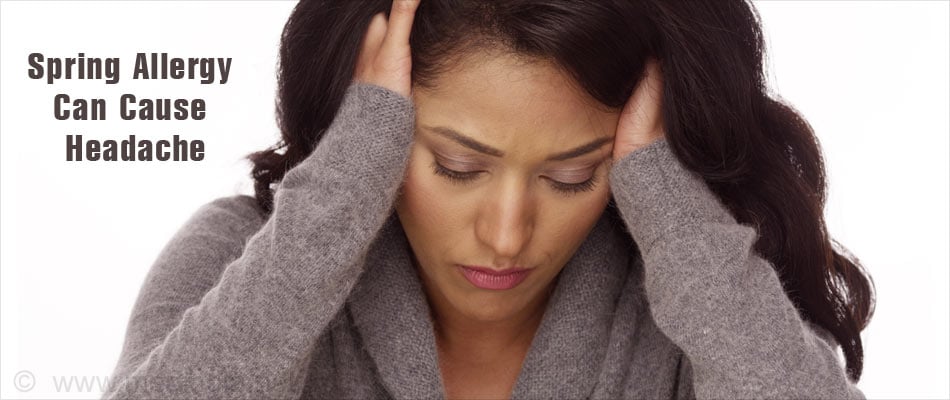
- Nasal congestion
- Decreased sense of smell
- Dark circles and puffiness under the eyes.
- Fatigue
- Irritability
- Clogged ears
How do you Diagnose Spring Allergy?
An immunologist or allergist who is specially trained and experienced in the diagnosis of specific allergens that trigger spring allergy will be able to determine if the symptoms are as a result of spring allergy or not. The doctor will do a thorough health history check up followed by an allergy test. Blood and skin tests are the common methods for diagnosing allergic rhinitis.
Allergy testing also called skin prick or blood testing is performed in order to determine the allergen/ antibodies.
- Skin allergy testing: A small amount of a particular allergen which is diluted is injected under the skin by making a small prick. This test determines specific allergens based on your skin reactions that occur within about 15 minutes. In the case of an allergy, a small swelling will occur where the allergen is introduced.
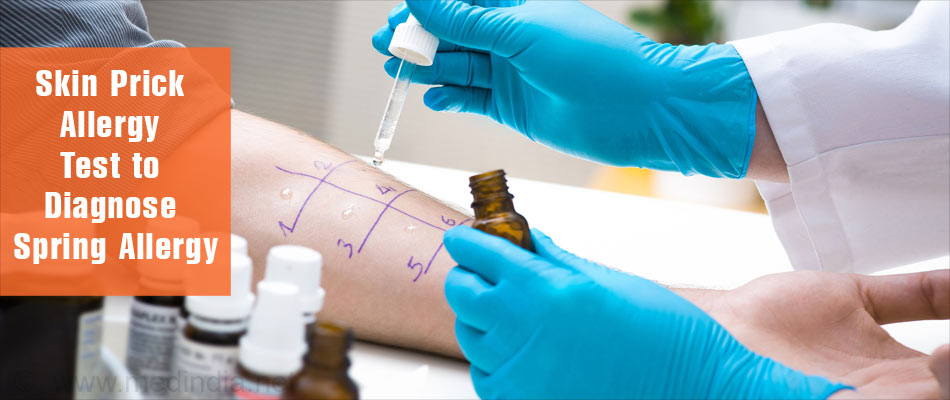
- Blood tests are performed when skin tests might be considered unsafe or when it wouldn’t work (if in case you were under medications or you had a skin condition that might interfere with the test)
- Special blood tests known as igE RAST (Radioallergosorbent) tests measure the levels of allergens.
- A differential blood count (CBC) shows the eosinophil count which increases in allergic conditions.
How do you Treat Spring Allergy?
1. Monitor pollen counts:
To control the symptoms of hay fever, it is essential that you monitor the pollen and mold counts. Pollen counts are measured with an instrument placed on a rooftop, which collects spores for one day. The instrument is then taken to a lab where the sample collected is analyzed for types and concentration of pollen. Pollen counts and pollen forecasts are both different. In the latter, predictions are based on the previous year’s pollen counts and present weather conditions. Pollen count represents the concentration of all the pollen (or of one particular type, like ragweed) in the air in a certain area at a specific time. It is expressed in grains of pollen per square meter of air collected over 24 hours. Pollen counts tend to be highest early in the morning on warm, dry, breezy days and lowest during chilly, wet periods.
2. Avoid the allergens:
Once your immunologist/allergist has diagnosed specific allergens, they will work with you in order to develop a plan to avoid allergens that trigger your symptoms.
A few ways to avoid allergy triggers:
- Restrict outdoor activities when the pollen counts are high.
- Keep all the windows at home/car closed during spring season when the risk of allergies is high. An air purifier may also help
- Have a bath after getting indoors and change your clothes after work or play outside(pollen might have got stuck in your hair)
- In case of indoor allergies due to dust mites or mold, you need to take action to reduce these allergens in your house
- Using a vacuum cleaner fitted with an HEPA (high-efficiency particulate air) filter helps in removing dust.
- Wear an NIOSH-rated 95 filter mask when mowing the lawn or doing other chores outdoors

3. Drugs:
You might be prescribed with drugs to treat allergic rhinitis such as Antihistamines, sodium cromoglicate, corticosteroids, decongestants, Leukotriene inhibitors (drugs that block leukotrienes- the chemicals the body releases in response to an allergen).
In case of a mild condition, a nasal wash can help remove mucus from the nose. You can do it with the help of a saline solution purchased at a pharmacy or you could simply prepare one at home by mixing half a teaspoon of salt and a pinch of baking soda in a cup of warm water.
Immunotherapy is also used for treatment of spring allergies. In this method body is exposed to allergens, which cause symptoms, but in a very low dose followed by an increase in dose until tolerance is achieved.
4. Sub-lingual immunotherapy treatment (SLIT):
Instead of shots, tablets are administered under the tongue of the patients suffering from grass & weed allergies
5. Allergy shots/ Immunotherapy:
This is often recommended when you cannot avoid the pollen and your allergic symptoms are very tough to handle. Regular shots of the pollen you are allergic to are administered such that each dose is slightly larger than the previous one until you reach the dose that makes you immune. The allergy shots help your body to adjust to the allergen that causes symptoms.
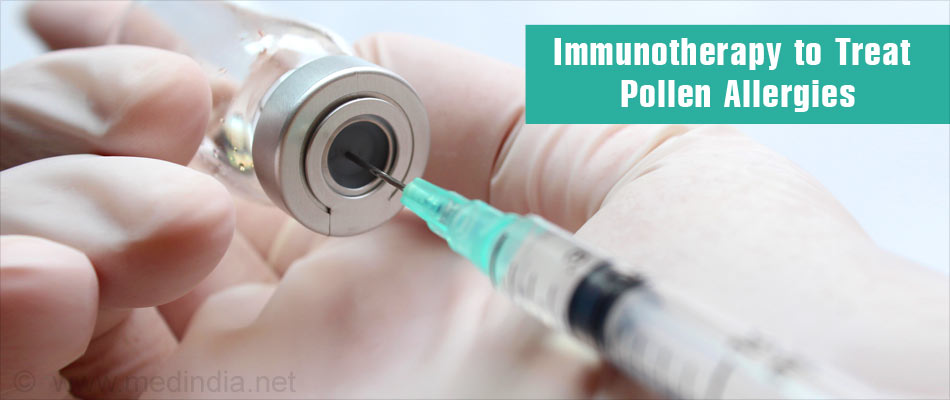
Health Tips:
- Take a shower after you get indoors to wash out all the pollen you might be exposed to.
- While traveling, keep the windows closed.
- Keep monitoring the pollen count and avoid going out when the count is high.
- Always buy the medicines with prescriptions.
- Do not use a nasal decongestant spray for more than 3 days in a row.
- Some antihistamine drugs could cause sleepiness and so try to avoid driving or operating machines when you’re taking such medicines.



